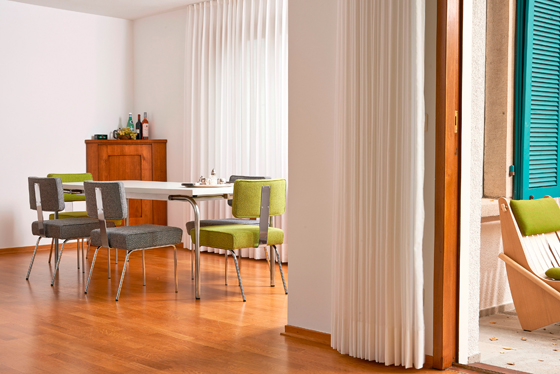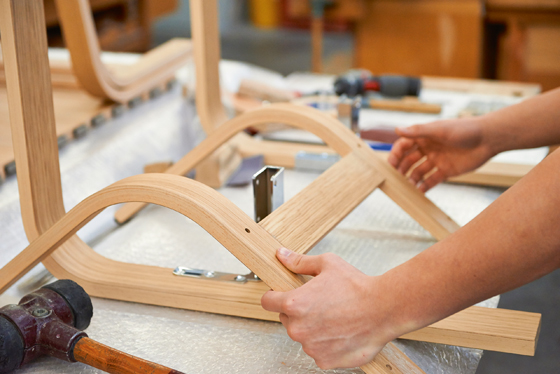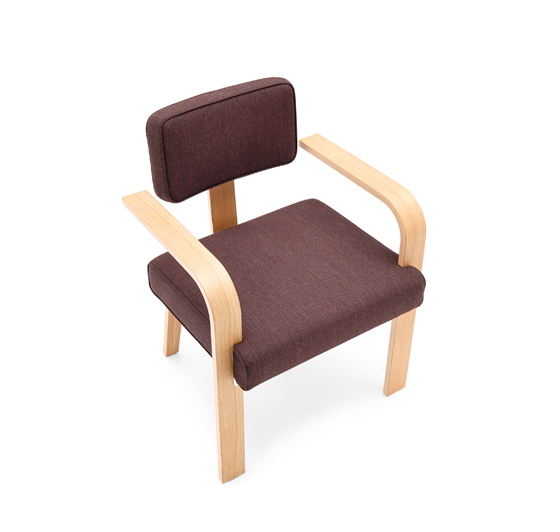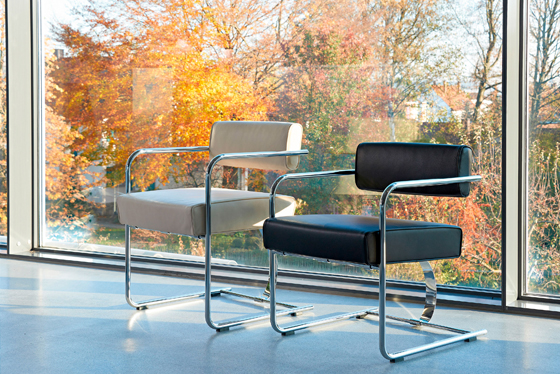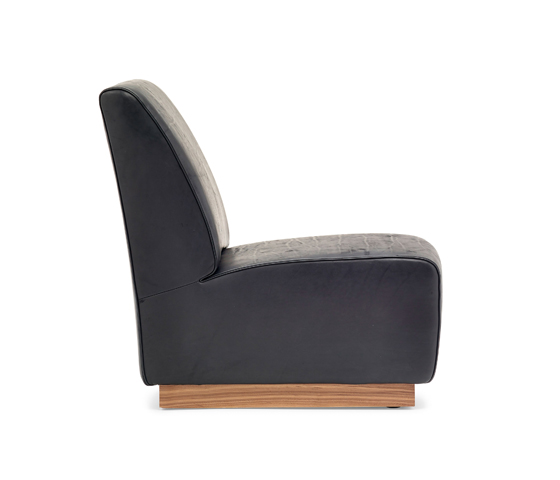Born Again
Storia del Marchio di Neutra by VS
Tauberbischofsheim, Germania
19.05.14
Questa pagina è stata archiviata e non è più aggiornata
Legendary Austrian-American modernist architect Richard Neutra’s unique furniture designs are back, thanks to respected European manufacturer VS. The perfect marriage of American design and German engineering.
Richard Neutra's iconic 'Boomerang Chair', which was originally designed for the Channel Heights Housing Project in the early 1940s

Richard Neutra's iconic 'Boomerang Chair', which was originally designed for the Channel Heights Housing Project in the early 1940s
×If it were a T-shirt slogan, it might read ‘Architects are doing it for themselves.’
Throughout the history of design, architectural practitioners of renown have time and again traversed the boundaries between creative disciplines to apply their thinking and aesthetic vision to that most inspiring and fundamental of object types – the chair. If you want to test your ideas, but don’t have the time or resources to design a building, why not see how they play out on a micro level in the form of a chair? And, conversely, if you’re hankering for a piece of architectural brilliance but, sadly, lack the wherewithal to acquire it, how about scaling down your ambition and becoming the owner of an architecturally oriented piece of furniture?
The formally idiosyncratic 'Boomerang Chair', whose details Neutra's son Dion, also an architect, has refined
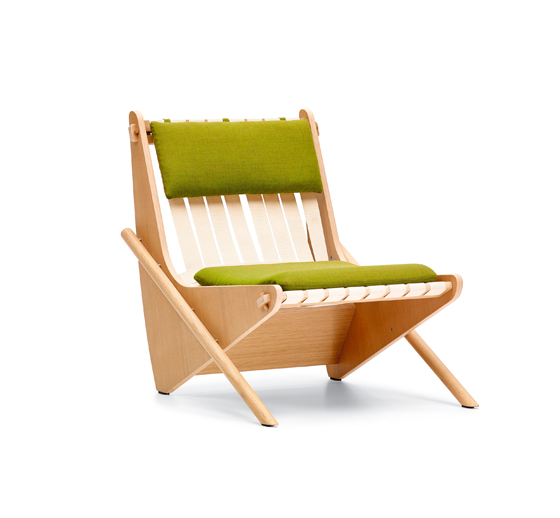
The formally idiosyncratic 'Boomerang Chair', whose details Neutra's son Dion, also an architect, has refined
×Neutra's steamlined 'Tremaine Side Chair', with angled tubular-steel legs
Feted Austrian-American modernist architect Richard Neutra, best known for his raft of Southern Californian residential projects in the International Style – such as the 1929 Lovell Health House – can be counted about this cohort of boundary-hopping creatives. But unlike the furniture designs of many of his peers, which have long been enjoyed by mainstream audiences internationally thanks to their large-scale industrial production, Neutra’s pieces were created for his own individual architectural projects. Gesamtkunstwerk-like, they were intended to form a dialogue with the villas and other spaces for which they were specifically conceived, such as the formally idiosyncratic ‘Boomerang Chair’ for the 1942 Channel Heights Housing Project.
Rectilinearity rules with Neutra's 'Alpha Seating' (top) and his 'Lovell Easy Chair + Ottoman' (above), designed in 1929 for the ground-breaking Lovell Health House

Rectilinearity rules with Neutra's 'Alpha Seating' (top) and his 'Lovell Easy Chair + Ottoman' (above), designed in 1929 for the ground-breaking Lovell Health House
×Neutra wasn’t and isn’t, of course, alone in taking a holistic approach to his work, considering furniture as an integral part of the overall architectural scheme of any particular interior. Think, for example, Mies van der Rohe’s ‘Barcelona Chair’ for the Barcelona Pavilion, Alvar Aalto’s ‘Paimio Chair’ for the Paimio Sanatorium, as well as contemporary, big-name architects, such as Frank Gehry and Zaha Hadid. But for various reasons – among them the number of his designs that didn’t progress beyond sketch form and the fact that his various chairs, tables and sofas tables were ultimately produced as one-off pieces or, at the most, as limited editions – Neutra’s profile as a designer of furniture has, in design-historical terms, been eclipsed by his celebrated architectural practice.
VS CEO Thomas Müller (left) in California with Richard Neutra's son and fellow architect Dion Neutra
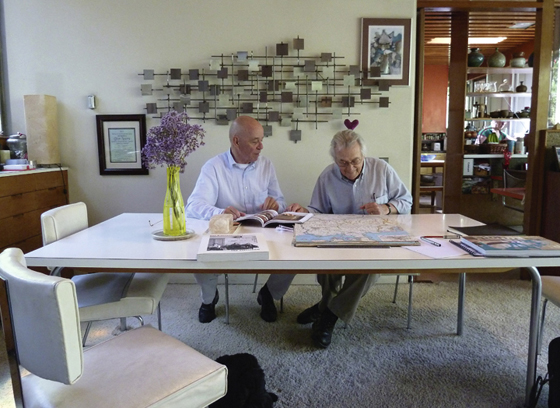
VS CEO Thomas Müller (left) in California with Richard Neutra's son and fellow architect Dion Neutra
בThe undiscovered furniture designer’ is how respected, family-owned German manufacturer VS describes Neutra, whose work, for the first time, has been launched as an exclusive design collection. ‘We see bringing these designs to the market as a great opportunity,’ says CEO Thomas Müller, third-generation owner of VS, ‘to bring them close to people with an architectural affinity, to design-oriented people. There’s an international market for this, an awareness of important design classics.’
Admitting that the acquisition of the licences to all of Neutra’s furniture in 2012 was ‘in part a stroke of luck,’ Haberer and his colleagues certainly recognised the market need for and cultural significance of design from the period of Californian modernism that Neutra’s designs represent. ‘These are design-historical pieces that are still thoroughly modern, something which fits with the VS focus. We place a lot of value on bringing products with longevity to market.’ It’s the long view for a long-established company: VS has certainly earned its stripes, founded as it was in 1898.
The process of reissuing Neutra's classic designs involved extensive research of drawings and other material held at UCLA's Neutra archive
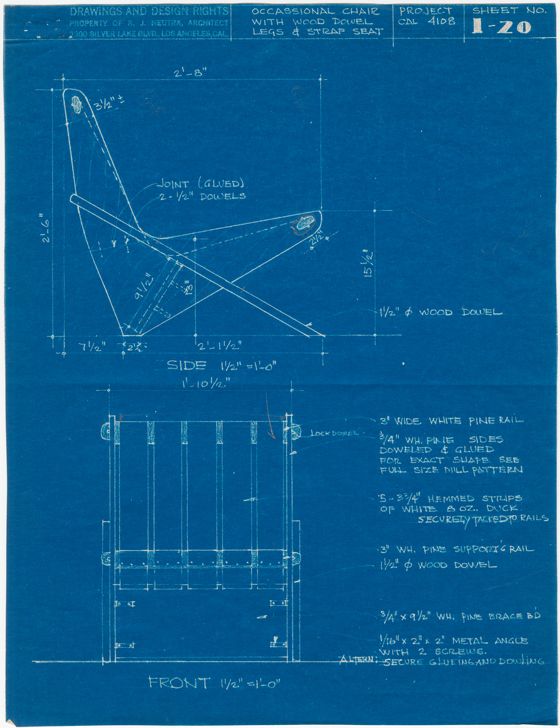
The process of reissuing Neutra's classic designs involved extensive research of drawings and other material held at UCLA's Neutra archive
×Understanding that the stakes are high taking on the material legacy of an architectural master like Richard Neutra, VS applied the same attention to detail to the process of recreating his designs as they do to the fabrication of all their products. The company chose to collaborate closely with the architect’s son (and former architectural partner) Dion Neutra, faithfully translating drawings and photographs held in the Neutra archive at UCLA into such born-again, striking pieces as the ‘Lovell Easy Chair and Ottoman’ (originally designed for the ground-breaking 1929 Lovell Health House), the dual-height ‘Camel Table’ and the ‘Tremaine Side Chair’.
Handmade in Germany: a dedicated workshop within VS's factory ensures top-notch quality
Award-winning German product designer Nicolai Fuhrmann was brought on board to bring VS’s wealth of experience of working in tubular steel and wood to bear on the new collection, ensuring a successful marriage of pedigree, mid-century American design with top-notch German manufacturing. It’s a natural union, as Haberer explains. ‘We’re popular with architects in the US. They tend to specify our furniture more than our counterparts in Europe. They really value the fact that everything is manufactured in Germany to a high quality.’ Such exacting standards are underpinned at the VS production facilities by an atelier-like, craftsman-operated workshop, which sits within the company’s larger industrial factory. Here, artisans make each Neutra piece to order – it’s numbered and arrives with a certificate –using second-to-none materials. This type ofbespoke production dovetails neatly with the spirit of Neutra’s considered, individualised architectural environments.
Curves and cantilevers: 'Dining Armchair' (top) and the 'Cantilever Steel Chair' (above)
Of course, times change. Technology moves on. The tastes of the market evolve. Reintroducing designs over half a century after they were first conceived invariably comes with a set of considerations. To what extent can they be modified, taking into account the intervening arrival of such here-to-stay issues as sustainability and safety regulations, while still retaining a clear authorship? Axel Haberer: ‘It was very important for us and for Dion Neutra to stick as closely as possible to the original designs. We tried with our selection of fabrics, leather and other materials, to remain as faithful to the time of mid-century design, too. There were, of course, some details where we applied our contemporary knowledge of steel fabrication, but we didn’t want to go into new, high-tech materials.’
Highs and lows: the supremely comfortable 'Slipper Chair' (top) and the 'Camel Table' (above), which can be fixed at two heights, providing both coffee-table and dining-table functionality
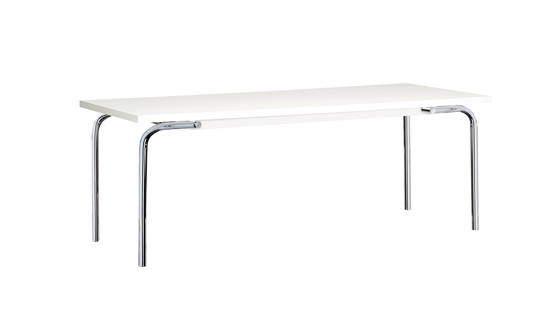
Highs and lows: the supremely comfortable 'Slipper Chair' (top) and the 'Camel Table' (above), which can be fixed at two heights, providing both coffee-table and dining-table functionality
×The reissued ‘Camel Table’, which can be fixed at both coffee-table and dining-table heights, had to undergo a series of safety tests that weren’t around at the time of its conception, but some fine-tuning by VS saw it pass without any change to the overall design of the product. ‘If you want to sell to the contract market, in particular,’ explains Haberer,‘meeting norms and regulations internationally becomes very important. If it’s going to be specified, it has to be a safe product.’
So where are Neutra’s classic furniture pieces being specified? Who does Neutra’s unique design language speak to? For a start, those who value the real value of hand-crafted design. ‘There’s a need for pieces that are special, that have a particular history. Not mass-manufactured furniture, but hand-worked. Private clients at home are, of course, one market. But also contract spaces.’ Hotel lobbies, banks and conference spaces have all received the Neutra treatment over the last short while, testament, as Haberer sees it, to a growing cultural informality in the world of business and work. ‘Large companies and organisations have moved towards transforming the office space into a kind of living area. Certain areas, such as break-out spaces, can benefit from furniture that’s a little bit different – such as Neutra’s “Boomerang Chair”’.
History is coming around again, and this time it’s staying. So, why not take a seat?
'We see bringing these designs to the market as a great opportunity,’ says CEO Thomas Müller, third-generation owner of VS, ‘to bring them close to people with an architectural affinity, to design-oriented people.'
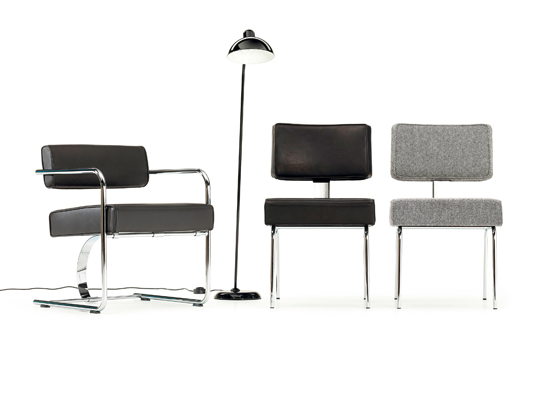
'We see bringing these designs to the market as a great opportunity,’ says CEO Thomas Müller, third-generation owner of VS, ‘to bring them close to people with an architectural affinity, to design-oriented people.'
×


